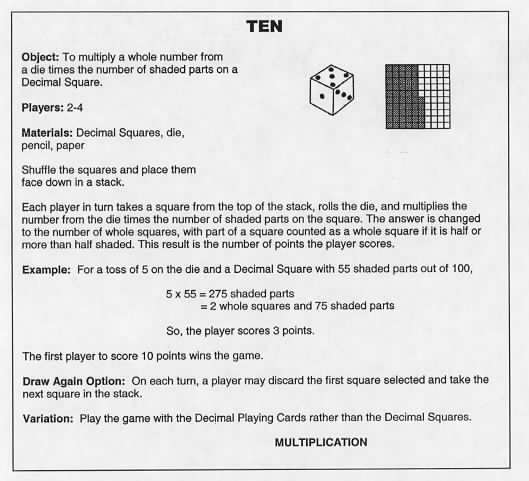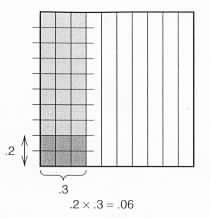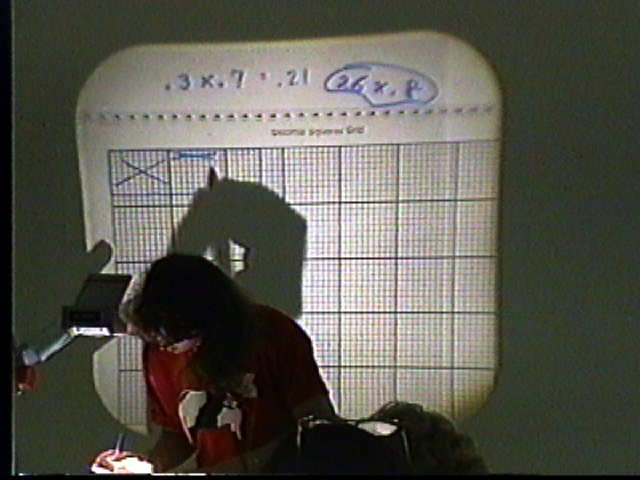.
.
Place an arbitrary transparent square on the overhead and roll a die. Multiply the number from the die times the number of shaded parts and note that the score for the turn is the total shaded amount rounded off to the nearest whole square. For the example in the game directions below the player scores 3 points. Explain the game of TEN and the Draw Again Option. Teachers will play this game in pairs and each pair will need a die. Calculators may be used for whole number computations. This game is also on page 90 of the Decimal Squares Teacher’s Guide.

.

